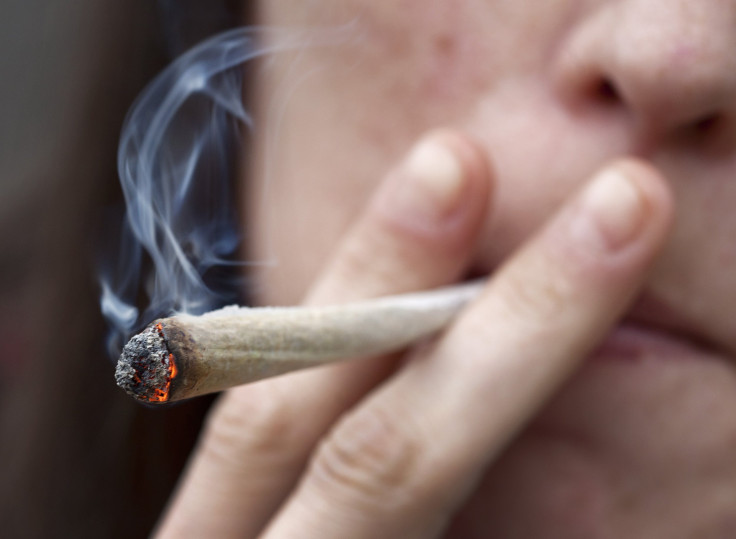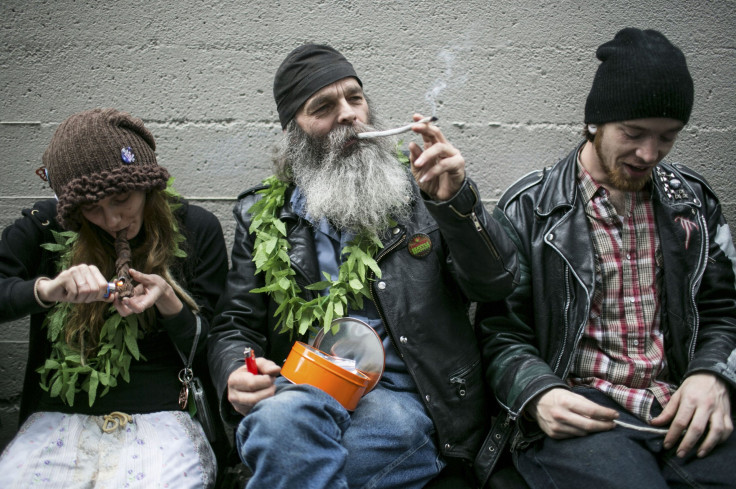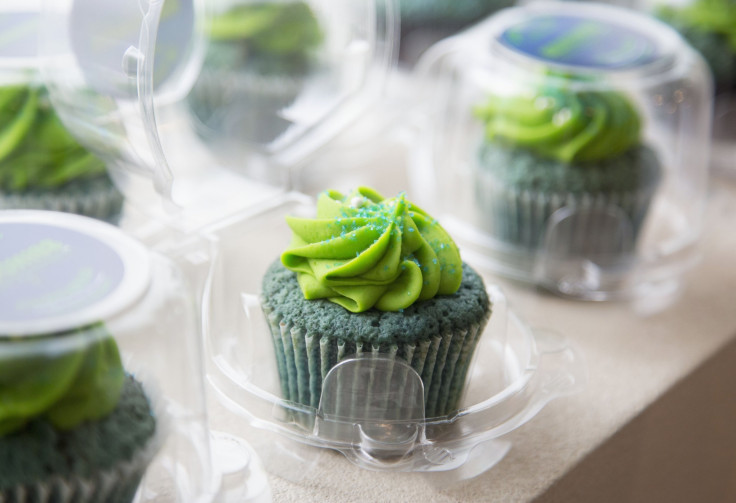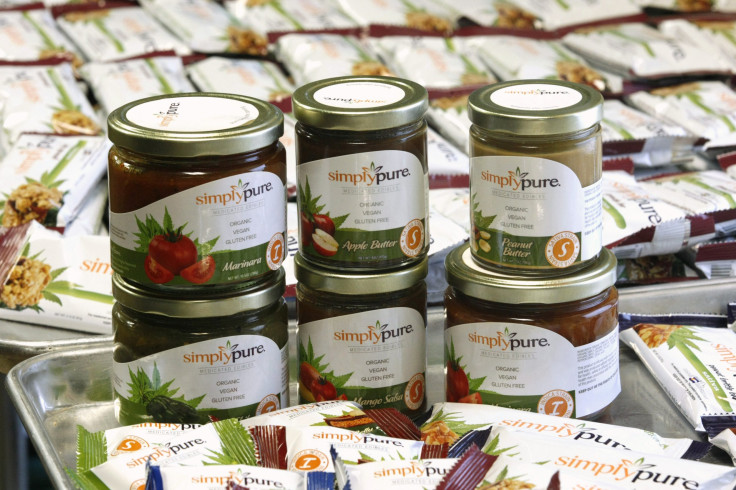In Era Of Legal Marijuana, The Products Are More Potent Than Ever

“Back in the '70s, you had to smoke a lot to get high,” Robert Kidder recalls, explaining his surprise when he recently tried legal weed for the first time at the suggestion of his daughter, who works at a marijuana dispensary in Denver called Sticky Buds.
After eating one of the store's pot-infused edibles, Kidder said he thought, “Damn, is this stuff good!”
So it goes in the legal pot era: As more states legalize, decriminalize or simply consider softening restrictions on marijuana, many people are finding that the products available today are not their father’s Summer of Love kind of weed. Today, pot smokers may find themselves one toke over the line after only one drag, increasing the chances for sudden revelations as well as for potential psychological disturbances or for being cited for driving under the influence.

Over the past few decades, cannabis, commonly known as marijuana and by numerous other nicknames, has been selectively bred, tweaked and refined to be more powerful and more effective – a kind of steroidal version of its former self. New methods of production such as hydroponic cultivation and improved artificial lighting have given growers more control over their product, including its potency. Today’s cannabis breeders are more like chemists than botanists. They can favor certain compounds in the plant, particularly delta-9-tetrahydrocannabinol, or THC, which is what gets a person high.
“Most of the pot in the '70s came from Mexico,” Gregg Gold, a Humboldt State University professor of psychology, told International Business Times. “Compared to today, it was pretty weak stuff.”
Gold said old-school pot consumers typically smoked the leaves of the cannabis plant, which “growers nowadays simply throw away.” Today's growers go straight for the flowering tops of the female plants, called the buds, which have the highest concentrations of THC.
Kidder noted that in most cases a pot smoker in the old days could smoke an entire joint or more without getting overly high, though even then some smokers had access to highly potent sensimilla or bolstered the THC effects through bongs and other mechanisms.
But what’s at issue now is not which generation has had the best weed but the potential ramifications of removing legal prohibitions to consumption of pot that is almost universally potent. As the U.S. becomes increasingly pot-friendly -- two states have legalized it, and others are considering following suit, dispensaries have access to a slew of new cannabis and cannabis-infused products of varying strengths that can produce different effects.

As of July 8, adults aged 21 and older can walk into one of Washington state’s recently licensed pot shops, show their ID and make a purchase from an array of legal products. In Colorado, which opened its first marijuana retail stores in January and is the only other state where recreational marijuana use is legal, “budtenders” sell cannabis-infused products ranging from butter, ice cream and chocolate bars to gummy candies, lemonades, granola bars, sweet cakes and beef jerky.
Edibles are popular in Denver's legal marijuana market in part because of consumers' health concerns over smoking. Others are swayed by laws that bar them from consuming marijuana in public; a pot cookie is far more discreet (and less odorous) than smoking a joint.
New York recently became the 23rd state to legalize medical marijuana, but the law does not go into effect until 2015. Nebraska, Ohio, Mississippi and North Carolina have decriminalized cannabis possession, meaning first-time offenders who are found with a small amount of pot will not face prison time or a criminal record.
Twenty-three states totally prohibit marijuana possession of any kind.
Today’s pot is, on average, two to seven times more potent than pot in the 1970s, and experts say some can be as much as 20 or even 30 times stronger. According to the National Institute on Drug Abuse at the University of Mississippi School of Pharmacy, the marijuana smoked 40 years ago was anywhere from .74 percent to 1.67 percent THC; by 2008, that number had jumped up to 8.5 percent. There are reports of some samples clocking in at 37 percent THC.
Comparing pot with alcohol, Ryan Vandrey, an associate professor in the Behavioral Pharmacology Research Unit of Johns Hopkins University School of Medicine, said the marijuana of the 1960s and ’70s was the equivalent of beer. “Now,” he said, “you’ve gone from beer to liquor.” Vandrey said a first-time pot consumer – or even a veteran consumer who is new to the world of edibles – could end up with enough THC in his system “to knock over an elephant.”
Like Colorado, Washington has set purchase limits of less than an ounce for concentrated versions of cannabis such as hash oil, 16 ounces for food that contains pot, and 72 fluid ounces for weed drinks. But some experts fear the products still contain too much THC and that consumers will not understand what constitutes a reasonable serving.

Anyone who has gotten higher than they intended to knows the pitfalls -- the paranoia, the vacillation between obsessive focus and inability to focus, the potential for eating anything and everything. As New York Times writer Maureen Dowd noted of her experimentation with a cannabis-chocolate candy bar in Denver, she ended up spending eight hours “in a hallucinatory state,” “panting and paranoid.”
“There’s a strong need for any consumer to be well informed,” said Roger Roffman, professor emeritus in social work at the University of Washington and author of “Marijuana Nation: One Man's Chronicle of America Getting High: From Vietnam to Legalization.” “That does not mean judged, shamed, blamed or glorified; it just means we owe it to consumers of marijuana to give them accurate, accessible information.”
While Washington has adopted several laws to help govern the new retail stores – including requiring marijuana-infused products to be stored behind a counter or other child-resistant barrier as well as banning cartoons on packaging, the state liquor board’s main campaign is to keep the products out of the hands of children, particularly because many look like regular chocolates or gummy bears. The Washington Traffic Safety Commission has also launched a "Drive High, Get a DUI" campaign.
But beyond the fine print on product labels, there have been few efforts to educate the public about the potential for marijuana to exacerbate certain heart conditions or schizophrenia -- links for which have been established. “The label will tell you what you need to know,” Roffman said, “but only if you know how to interpret it.”

The Washington Liquor Control Board said last week it will adopt rules requiring all marijuana-infused products to be labeled clearly as containing marijuana, give serving size recommendations (1o milligrams, with a maximum of 10 servings per package) that the consumer can easily identify, and require products to be approved by the board before sale. Likewise, Colorado officials are expected to issue later this month stricter potency and dosing-size rules designed to prevent overconsumption. Still, experts say that without a central body such as the Food and Drug Administration to oversee the quality of new products for safety and consistency, dispensaries run the risk of selling products whose labeling could be inaccurate or inadequate.
A batch of pot brownies, for example, is mixed with a highly concentrated THC-derived oil. If the batter is not thoroughly stirred, some brownies could contain more THC than others. If quality-assurance testers take just one brownie from that batch for testing and report back with an acceptable level of THC, all the brownies from that batch – including the ones that contain higher THC levels – will be given the stamp of approval. With pills and alcohol, at least, “you know the potency is the same every time,” Vandrey said.
All of which means that even legal users experimenting with pot in the U.S. should be cautious in their approach, noted Rebecca Craft, chair of the Department of Psychology at Washington State university.
“I can tell you what I told my husband: Be really, really conservative,” Craft said. “If you smoked a whole joint before, just take one toke and sit back and wait.”
© Copyright IBTimes 2024. All rights reserved.






















